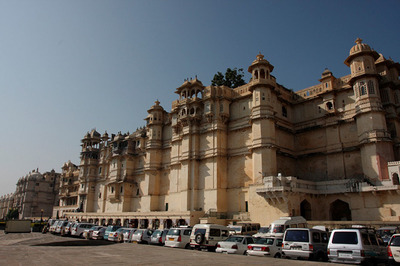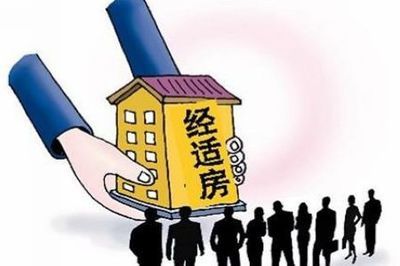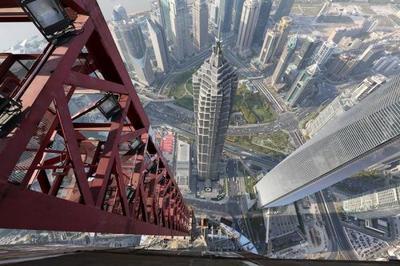The four cities ofChina
May 26, 2007by NitaThis is the first in my series of articles on China. These aremy own personal impressions of four Chinese cities –Beijing, Shanghai, Xian and Guilin. I have tried to compare them toIndian cities. I will be happy if you add your own impressions tothe article.
This particular piece has become very long but I didn’t want tobreak up the post into several posts on different cities. My otherwrite-ups on China will be shorter.
Introduction
The first thing that hits you when you visit China are the welllaid out cities, their sparkling cleanliness, the tallbuildings and the absence of crowds! It was all unexpected, atleast the lack of crowds. China has the highest population in theworld at 1.3 billion but clearly the people are not concentrated inthe main cities and anyway, the country is so huge, and the citiesso spread out that the large population can probably beabsorbed.
India, with its billion strong population seems vastly crowdedas compared to China. All our cities are choc-o-bloc with peopledue to migration from the rural areas. In China there is ruralmigration as well, but I heard that the Chinese government controlsit. People are not allowed to put up their shanties on pavements oron government or private land. In fact I read a news report whichsaid that Beijing will be enforcing a population growth of anannual rate of 1.4 per cent, half of what it is now, and thepopulation will not be allowed to cross 18 million. There are evensuggestions to build communities for the old outside the city!
All the four Chinese cities that I visited were fancy – to myIndian eyes. The picture above was taken in Beijing, which is abeautiful modern city. I had had the impression that only Shanghaiwas modern, but no, even Beijing the capital is so. And not justBeijing. The modernity and westernisation is visible in the othercities too. Xian and Guilin. True, all these four cities aretourist cities, and it could all be an eyewash…but I don’t thinkso. The modernity was there to see and the cleanliness was real.Evident even in the poorer quarters. Cleanliness and disciplineseem to be qualities well ingrained in the Chinese people.
The iron hand of the government was evident everywhere ofcourse.People dare not litter. People dare not break the traffic rules.People are careful here. And patient. All cars wait patiently inline at the toll booths. And no horns! They don’t need signs totell them don’t use horns, people just don’t – not even in atraffic jam. This was so unlike India! Wasn’t China at least alittle like India? Well, not in the looks and the sounds of thecities.
Beijing
Beijing, in the northern part of China, is a cold, shiny city, kindof brand new. New buildings being built everywhere and not justapartment blocks but hotels and large complexes. But hey, theugliness of construction is invisible to people on theroads. Every single building under construction (in all the fourcities) was wrapped in blue and if there was any debris I didn’tsee it even though we walked on the pavement right outside.
In India, ugly constructions are visible everywhere and buildersdon’t bother to remove debris even after the job is done. Icouldn’t help feeling a little sad. Why can’t we enforce rules onthe developers and builders? I know there is a law which imposesheavy fines on builders who leave debris lying around…but itdoesn’t seem to work.
I liked the fact that when the Chinese authorities buildflyovers, they make sure to protect residents living in nearbybuildings from sound pollution (these were seen in all four cities)as seen in the picture below:
Beijing is preparing for the 2008 Summer Olympics and thestadium is being built in the shape of a bird’s nest:
In Beijing there is not a speck of dirt anywhere, not even inthe tourist areas which were thronging with people. I looked. Andlooked. They clean everything constantly! Considering that the cityhosts over 15-16 million people (China’s second largest city),I thought this was pretty good show.Fines for littering are strictly enforced.
A taxi driver told us that just about 15 years ago Beijing wasnothing, it was poor. All the flyovers, the buildings, in facteverything has been built recently. You can see the newness of itall. Old buildings pulled down. New ones built. I do not know whatChinese cities were like 20 years ago, but the fact that most ofthe buildings in all the cities look new, I guesseverything has been rebuilt. If China has achieved all this in justabout 20 years hats off to them.
I guess the speed with which China has achieved this cannot bereplicated in a democracy like India. Pulling down even one oldbuilding creates a lot of protest and several court cases. Alsopoor tenants are given a lot of importance, they have to bere-housed. Even if one tenant protests there are legalcomplications and delays.
One good thing about the Chinese cities – in the hectic buildingspree the Chinese have left plenty of open public places forpeople. Several public gardens, wide pavements without hawkers, places outside malls withbenches to sit on. And look at these buses. These are thegovernment buses for ordinary people. At first I couldn’t believemy eyes. These buses seemed so first world but they were in China.And not just in Beijing and Shanghai – but in other cities too.
It’s the pollution that took me aback. Beijing is sopolluted that my eyes started to smart. The smell of it is strongin the air. An article in a recent issue of the Economist says thatthe Chinese government is taking cars off the roads (cars with oddand even numbers allowed on alternate days) to reduce the pollutionlevels in Beijing – all to impress the hordes that are going todescent on the city next year during the Olympics. Well, when thegovernment decides to do something, they succeed. But the truth isthat China is growing so fast that pollution control measures havenot been put in place. There were newspaper reports of growingcancer rates.
To a limited extent one can compare Beijing to Delhi. Wideroads, flyovers and the general impersonal and formal atmosphere.Wealth and power seemed to matter a lot here.
We traveled by train from Beijing to Xian. And got anopportunity to see the countryside. The villages we saw on the waywere clean and neat. Even the distance between houses was equal,they were all built with a design in mind. These people were poorbut they were hard working. In the early hours of the morning wesaw men and women out in the fields – exercising!! Never seenanything like that in my life. There was poverty, but povertydoesn’t necessarily mean dirt. That is what we in India seem tobelieve. That poverty and filth go together.
Xian
I liked Xian (pronounced Shian or Sian) the best, inspite of thepollution. In the picture you can see the haze over the city. Xianhas a power plant in the city and the city also happens to be thelargest industrial centre in that part of the country. It lies westof Beijing, in the interior.
It is a cultural centre, with a history of 3000 years. The cityhas character. Plenty of old buildings and quaint architecture.It’s not crowded – just over 8 million people. There are a lot ofstudents from other parts of China in Xian as it is known for itsacademics. Not as many colleges as Beijing and Shanghai’s ofcourse,but its a place thats cheaper to live in. There was a lot of newconstruction happening in this city too and the new apartmentbuildings coming up are expensive, similar to Indian real estateprices.
If one has to compare this city to any in India, Iguess I would say maybe Bangalore, maybe Pune. Not the looks of thecity ofcourse as Xian is not crowded and nor does it have trafficproblems. In sheer beauty it wins over most Indian cities. Thecomparision can be made purely because of the feel of the city, itshistory, and the fact that it’s an industrial and academic centre.Software is coming up here too.
Guilin
This city, in the south east of Xian, is a place of scenicbeauty as it is surrounded by hills but at the same time is asmodern as the rest of the cities. It is the least polluted of allthe cities we visited. It has a population of less than 1.3million, and is on the bank of the Li River. It is a beautiful wellplanned city. Wide roads, open spaces, big gardens, tree linedavenues. The picture below is that of a mall and the tables outsideare for the public to sit on..it is not a restaurant. Its for thepoor and the rich alike but as you can see there are hardly anypeople there. We sat there for a long time, looking at the people. In Indiasuch a place would be too crowded to be in.
I couldn’t think of any Indian city that Guilin could becompared with. Chandigarh maybe?
Shanghai
On the banks of the Yangtze River on the eastern coast of China,lies Shanghai, China’s commercial capital. It has awesome buildingsand all seem to have unique designs:
The city is crowded and dirty if one compares it to otherChinese cities, but not crowded by Indian standards and certainlynot dirty. Its just that by now I was looking around to see somekind of litter and actually managed to see scraps of paper lyingabout! No real dirt though. No open drains, no shit andurine on the roads like in Mumbai even though this city seems tocontain a fair amount of poor people. Even the shanties whichdotted the city were cleverly barricaded from view. I peeped intoone narrow gully which housed some so-called slums. Yes, there wereunpainted and shabby rickety houses with clothes hanging out of thewindows (the picture on the left is not an example of that) butthere was cleanliness. No stink at all. The paths which led insidewere clean and well swept. The fact is that no one, absolutely noone uses the city as a toilet. Waste is thrown into dustbins. Finesare strictly enforced.
I guess a westerner will take all this for granted, but weIndians can’t. After all Shanghai is is China’s most populatedcity, with about 20 million residents, the ninth largest in theworld. But its been kept clean.
However, the city reminded me instantly of Mumbai. The scurryingpeople, the general buzz. Some of the architecture reminded me of Mumbai too,but ofcourse most of the buildings in Shanghai are plusher. I didsee some hawkers in the inside lanes but they were few and farbetween. But looking at Shanghai I can why our politicians compareMumbai and Shanghai and can understand their desire to turn Mumbaiinto Shanghai. I am not sure how this is possible because there isno strict enforcement of anything here.
The warmth, the friendliness of the people in Shanghai is incontrast to the cool atmosphere in the other cities. People smilemore easily here and wear more casual clothes. Its the people whichgive a city its personality and Shanghai is warm, friendly andhelpful.
Written a few hours later: I forgot to add something.There were no stray dogs in China! Not a single one! And in thesefour cities we were driving from one end to the other, and insmaller lanes too, for shopping and for meals. And what was reallystrange was that there were no birds! Not a single one except inGuilin where one heard a distant chirp. I am still trying to figureout the complete absence of birds. It wasn’t cold out there. It wassummer and the skies were blue and the weather superb.
中国的四个城市
2007年5月26日,日
由丹田
这是我对中国的一系列文章中的第一。这些都是我个人的印象,中国四大城市 -北京,上海,西安,桂林。我试图把它们比作印度城市。我会很乐意,如果你的文章添加自己的印象。
这种特殊的一块已成为很长,但我不想后分解成几个职位在不同的城市。我对中国写会更短。
简介
第一件事情就是打你,你当你访问中国时,都精心布置的城市,他们的波光粼粼的清洁,高大建筑物和人群的情况下!这一切都是意外,至少缺乏的人群。中国有1.3亿美元,在世界人口最多的,但清楚的人都没有集中在主要城市,无论如何,国家是如此巨大,城市蔓延,人口众多,也许可以被吸收。
印度,似乎大大拥挤相比,中国用了10亿人口的强劲。我们所有的城市都乔科- O-集团的人从农村迁移。在中国农村移民为好,但我听说,中国政府控制。人们不允许把人行道上或政府或私人土地上的棚户区。事实上,我读到一则新闻报道说,北京将实施人口增长了1.4%的年增长率,究竟是什么,现在的一半,人口将不能跨18万。甚至有一些建议,以建立社区为老城外!
所有四个,我参观了中国的城市是看中 -我的印度眼睛。上面这张照片是在北京,这是一个美丽的现代化城市。我曾经的印象,只有上海是现代的,但没有,甚至北京的资本是如此。不只是北京。在其他城市是可见的,现代和西化。西安和桂林。诚然,这四个城市是旅游城市,它都可能成为一个洗眼......但我不这么认为。现代性在那里看到的清洁是真实的。即使在较差的宿舍可见一斑。卫生和纪律似乎在中国人的根深蒂固的素质。
政府铁腕到处可见ofcourse。人们不敢乱抛垃圾。人们不敢违反交通规则。人们小心。和耐心。全车耐心排队等候在收费亭。没有号角!他们不需要的迹象,告诉他们不要使用牛角,人们只是不 -即使在堵车。这是一点都不像印度!不是中国至少有一个像印度这样的小的吗?好了,而不是在城市的外观和声音。
北京
北京,在中国的北部,是感冒了,有光泽的城市,一种全新的。正在兴建新的建筑物无处不在,不只是的公寓楼,但酒店和大型复合物。但是,嘿,丑陋的建设道路上的人是无形的。正在建设中的每一个单体建筑(在所有四个城市)被包裹在蓝色,如果有任何碎片,我没有看到它,即使我们走在人行道上的权利外。
在印度,丑陋的建筑随处可见,建设者也懒得去清除杂物,甚至作业完成后。我不禁感到有点悲哀。为什么我们不能强制执行的开发者和建设者的规则是什么?我知道有一项法律,对建设者离开碎片随处重罚......但它似乎并没有工作。
我喜欢这一事实,中国当局兴建天桥时,他们确保以保障居民住在附近的建筑物在下面的图片中看到的噪音污染(这些都是在所有四个城市):
北京正在准备2008年夏季奥运会体育场正在建一个鸟巢的形状:
在北京没有任何地方的污垢斑点,即使在旅游领域,与人thronging。我看了看。看去。他们不断清理一切!考虑到城市的承载超过15-16亿人(中国第二大城市),我认为这是相当不错的显示。严格执行乱抛垃圾的罚款。
出租车司机告诉我们,只有约15年前的北京是什么,它是穷人。所有的天桥,其实一切建筑物,最近已建成。你可以看到这一切的新奇。旧楼扯了下来。新的建造。我不知道什么像20年前的中国城市,但事实上,在所有城市的建筑物最期待新的,我想一切都已经重建。如果中国只有约20年的帽子已取得这一切给他们。
我猜想,中国已经取得了这个不能复制在印度这样一个民主的速度。拉下甚至一个古老的建筑,创造了很多抗议,并数宗法庭个案。贫困住户也都获得了很多的重要性,他们被重新安置。有租户抗议,即使是合法的并发症和延迟。
关于中国城市的一件好事 -在繁忙的建设热潮,中国人已经离开很多人开放的公共场所。几个公共花园,没有小贩,商场以外的地方,坐在长椅的行人路。看看这些巴士。这是政府为老百姓巴士。起初,我简直不敢相信自己的眼睛。这些巴士似乎使第一世界,但他们在中国。不只是在北京和上海 -但在太多其他城市。
它的污染,把我吓了一跳。北京是如此的污染,我的眼睛开始智能。它的气味在空气中强烈。在最近发行的“经济学家”的文章说,中国政府正在采取关闭道路(隔日允许单双号车),以减少汽车在北京的污染水平- 所有打动成群,世系对全市明年奥运会期间。那么,当政府决定做一些事情,他们成功了。但事实是,中国增长如此之快,污染控制措施尚未到位。有不断增长的癌症发病率的报纸报道。
要在有限的范围内,人们可以比较北京到新德里。宽阔的马路,天桥和一般的客观的和正式的气氛。财富和权力,似乎很多事。
我们乘坐火车从北京到西安。了有机会看到农村。我们一路看到的村庄干净整洁。即使在房屋之间的距离是相等的,他们都在心中设计建造。这些人是穷人,但他们辛勤工作。在清晨时分,我们在田里看到了男人和女人- 行使!!从来没有见过任何想在我的生活。有贫穷,但贫穷并不一定意味着污垢。这是在印度,我们似乎相信。这种贫困和污物一起去。
西安
我喜欢在西安(发音施安德或西安)是最好的,尽管污染。在图片中,你可以看到在城市上空的阴霾。西安在城市的一个电厂,也恰好是,该国最大的工业中心城市。它位于北京西郊,在室内。
这是一个文化中心,具有3000多年的历史。全市有性格。大量的旧楼和古朴的建筑。这是不拥挤 -刚刚超过8亿人。有很多来自中国其他地区在西安的学生,因为它是已知其学者。不许多高校,如北京和上海的ofcourse,但它的一个地方多数民众赞成住进去有在这个城市发生了很多新的建设和新的公寓楼,上来太昂贵,类似印度的房地产价格更便宜。
如果你有比较这在印度的任何城市,我想我也许会说班加罗尔,也许普纳。不是看起来像西安不拥挤,也不会有交通问题,城市ofcourse。在纯粹的美,它赢得了大多数印度城市。可比较,纯粹是因为城市的感觉,它的历史,和事实,即它是一个工业和学术中心。软件是来这里。
桂林
这个城市,在西安东南,是一个风景秀丽的地方,因为它是四周群山环抱,但同时是像其他城市的现代。这是最起码的所有城市,我们参观了污染。它有一个小于1.3万人口,是漓江银行。这是一个精心策划的美丽的城市。宽阔的马路,开放空间,大花园,绿树成荫的途径。下面的图片是某商场和表外供市民坐的......这不是一个餐厅。为穷人和丰富的一致好评,但你可以看到几乎没有任何人。我们坐在那里很长一段时间,寻找的人。在印度这样一个地方,将过于拥挤的。
我想不出任何印度城市,桂林可以相比。昌迪加尔可能吗?
上海
在中国东部沿海的长江银行,位于上海,中国的商业资本。真棒建筑物,似乎都具有独特的设计:
城市拥挤和肮脏的,如果比较中国其他城市,但并不拥挤,印度标准,肯定不会脏。只是现在我环顾四周,看到一些垃圾和实际看到的纸张卧谈的下脚料!虽然没有真正的污垢。没有开放的排水渠,没有像在孟买的道路上的屎尿,即使这个城市似乎包含相当数量的贫困人口。即使是点缀着城市的棚户区被巧妙地搭成的视野。我窥视到一个狭窄的沟壑里一些所谓的贫民窟。是的,有未上漆的和摇摇晃晃的破旧的房子的窗口挂出的衣服(左图不是一个例子),但有清洁。无臭。路径而导致内部清洁,以及席卷。事实是,没有人,绝对没有人使用一个厕所的城市。废物扔进垃圾箱。严格执行罚款。
我想一个西方人,这一切是理所当然的,但我们印度人不能。毕竟上海是中国人口最多的城市,约20万居民,在世界上第九大。但其一直保持清洁。
然而,城市的提醒我即刻孟买。乱窜的人,一般的嗡嗡声。架构的一些孟买提醒我太多,但ofcourse在上海的大部分建筑物都plusher。我也看到一些小贩在内线车道,但他们
 爱华网
爱华网


